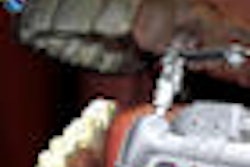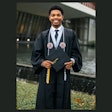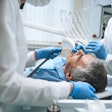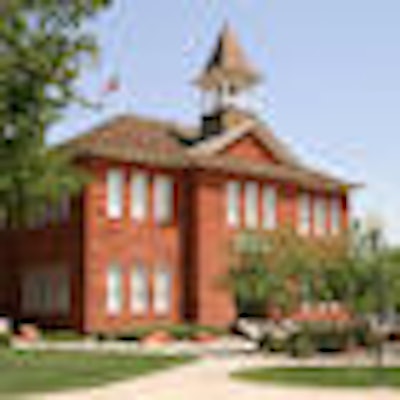
The University of Minnesota School of Dentistry is grappling with accusations that its DentSim dental simulators are serving as expensive recruiting tools instead of useful training devices.
A December 1 article in the student newspaper the Minnesota Daily characterized the school's 20 DentSim devices as "severely underutilized," claiming that the School of Dentistry's Advanced Simulation Clinic is vacant 85% of the time and that "the clinic hasn't been the resource that administrators said it would be."
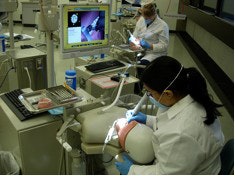 DentSim is a computerized simulation system used for dental training and practice. Image courtesy of Image Navigation.
DentSim is a computerized simulation system used for dental training and practice. Image courtesy of Image Navigation.
DentSim is a computerized simulation system used for dental training and practice, according to Image Navigation, the device's maker. In 2008, the school spent $1.5 million for 20 of the devices as part of a $10 million renovation, according to the Daily. In addition, the university has a maintenance contract with Image Navigation that costs $80,000 annually.
Each DentSim system features a mannequin with an adjustable head, a lifelike mouth, and a set of plastic teeth. An infrared camera tracks students' work, and the computer offers instant feedback on how students perform, providing a 3D representation of the tooth they're operating on.
Since installing the DentSim equipment, university officials have touted the Advanced Simulation Clinic as both an educational tool and a recruitment aid, according to the Daily. But some students claim they have had limited access to the DentSim systems and "everyone knows" there are problems with the technology.
One anonymous source called the devices an "administrative toy," claiming that "DentSims fool people who aren't familiar with dentistry and the machine's actual capabilities."
Not finicky or fickle
Image Navigation CEO Lawrence Obstfeld took issue with these and other assertions made in the Daily article.
“The article focused on negative views of a few.”
— Judith Buchanan, DMD, PhD, interim
dean, University of Minnesota School
of Dentistry
"DentSim provides students with evaluations on-demand at two or three times the frequency that evaluations are available in the legacy preclinical lab," Obstfeld said in an interview with DrBicuspid.com. "The evaluation is objective and readily understood by the dental student."
In addition, the newspaper misreported the cost of the equipment, according to Obstfeld. "It incorrectly stated $1.5 million as the cost," he said. "The University of Minnesota actually paid $1.16 million for 20 DentSims."
Obstfeld also disputed comments in the article that DentSims are "finicky, fickle machines."
"DentSim has highly accurate cameras and precisely calibrated mechanics and tracking," he said. "System accuracy is in the range of several hundred microns. Like all highly sensitive and expensive laboratory equipment, it should be maintained by experts. But there are DentSims that have been used in operation for tens of thousands of hours since 2003 at the University of Pennsylvania and the University of Tennessee."
In the comment section at the end of the Minnesota Daily article, Margrit Maggio, DMD, director of operative dentistry at the University of Pennsylvania, said the equipment does have some maintenance challenges. But she rigorously defended the value of the simulation devices.
"We have found our Advanced Simulator laboratory: 1) has augmented our curriculum, 2) certainly prepares our students for the traditional laboratory courses that follow, and 3) has been very effective in training for different applications (ergonomics and magnification training) at the same time," Dr. Maggio wrote. "I have witnessed the difference between those students trained in the DentSim laboratory and those who have not been."
'Self-serving interests'
The interim dean of the University of Minnesota dental school, Judith Buchanan, DMD, PhD, also took issue with the Daily article.
"The Minnesota Daily article took comments from anonymous sources who I expect had self-serving interests," Dr. Buchanan stated in an email to DrBicuspid.com. "The article focused on negative views of a few and did not appear to have any interest in the positive aspect of this teaching methodology here at Minnesota or elsewhere in the U.S."
Dr. Buchanan expressed ongoing support for the devices amid criticism from an "upper-level student" who stated in the article that "you have administrators who think that's the new way of dentistry, and it doesn't work."
"Research from several sets of investigators and published in reputable journals support the potential for teaching with advanced simulation technology," Dr. Buchanan noted. "Their performance is measured against a gold standard, and the learning experience requires less faculty oversight."
This is the latest controversy to surface at the dental school since Buchanan took over as interim dean earlier this year. Her selection after the departure of the former dean, Patrick Lloyd, DDS, divided the faculty, and some faculty members questioned the selection process. Questions of nepotism subsequently arose when Dr. Buchanan named her husband, Peter Berthold, DDS, DMD, PhD, to interim chairman of the department of primary dental care.





